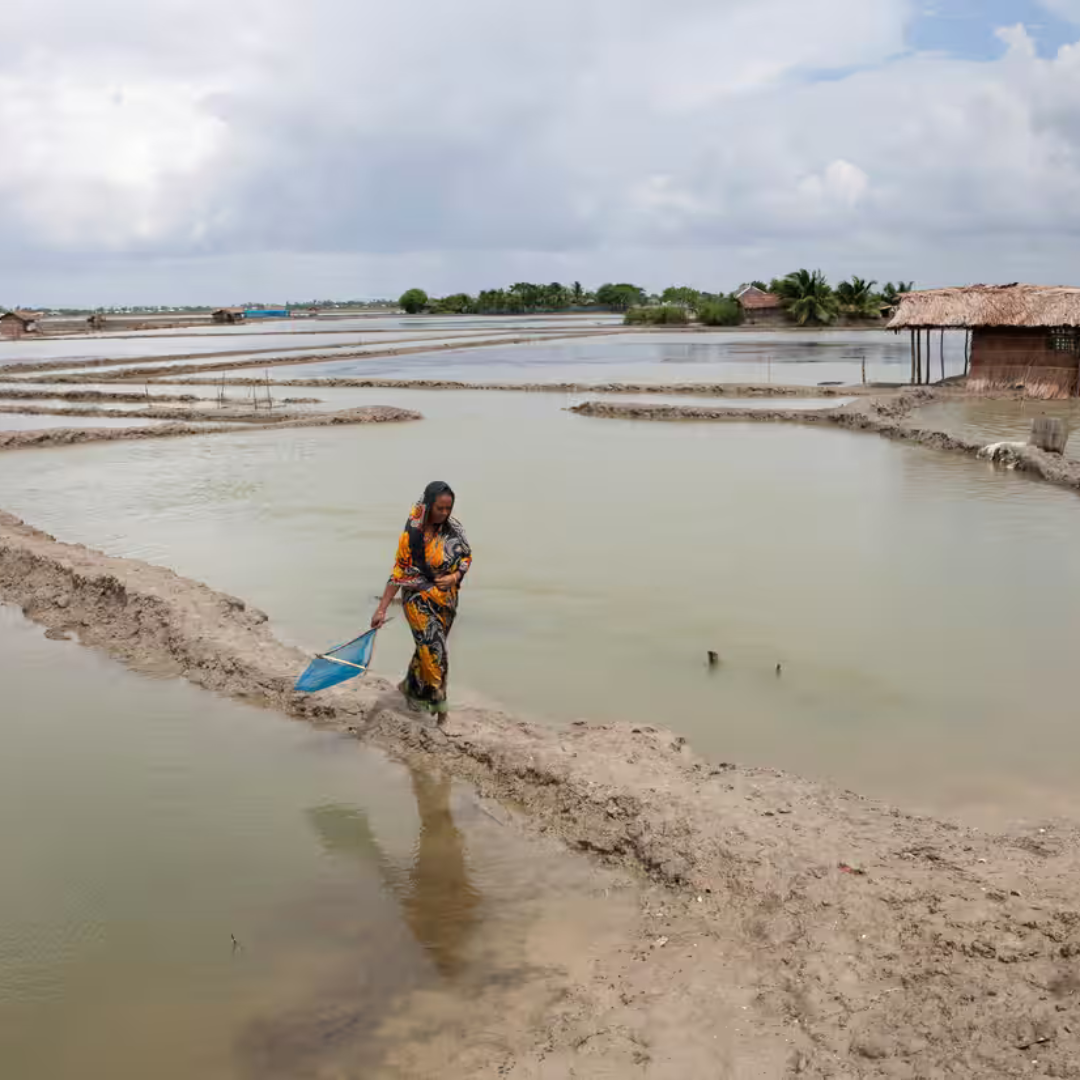The Impact of Unsustainable Shrimp Farming
Over half of the world's shrimp now come from farms, a reality that would have seemed impossible just 40 years ago when shrimp farming faced nearly insurmountable challenges (according to the World Wildlife Fund). This surge in farming has led to a global shrimp surplus and lower prices, but it has also left a significant mark on the environment and human lives.
Why Unsustainable Shrimp Farming is Bad
Unsustainable shrimp farming is detrimental on multiple levels. It destroys critical habitats, pollutes water resources, and contributes to climate change. The short-term economic gains it offers are far outweighed by the long-term environmental and social costs. As global consumers, choosing sustainably sourced shrimp can help protect the environment, support responsible farming practices, and ensure that coastal communities can continue to thrive.
As climate change led to frequent flooding, many crop farmers turned to shrimp farming as an alternative. However, this shift has brought more harm than good, with farmers facing challenges from disease, storm damage, and oppressive monopolies, leaving them with little to gain. The Guardian reveals that intensive shrimp farming has wreaked havoc on both the social and environmental fronts in Bangladesh. Meanwhile, fertilizer and contaminated runoff have polluted nearby farms and water sources. Sadly, not only them, many other countries grapple with severe environmental consequences from shrimp farming, according to The Cornucopia Institute
Environmental Degradation:
Mangrove Destruction: Unsustainable shrimp farming often leads to the clearing of mangrove forests. Mangroves are critical coastal ecosystems that protect shorelines, sequester carbon, and serve as nurseries for many marine species. The loss of mangroves contributes to increased coastal erosion, loss of biodiversity, and higher carbon emissions
Water Pollution: Intensive shrimp farming relies heavily on the use of chemicals, antibiotics, and fertilizers. These substances can contaminate surrounding water bodies, leading to eutrophication, harmful algal blooms, and the decline of marine life. Polluted water also affects the health of local communities relying on these resources
Biodiversity Loss:
Impact on Marine Life: The destruction of habitats and pollution associated with unsustainable shrimp farming can lead to a significant loss of marine biodiversity. Species that depend on mangroves and clean water are particularly vulnerable. Overcrowded shrimp ponds can also become breeding grounds for diseases, which can spread to wild populations
Climate Change:
Carbon Emissions: Mangroves are highly effective carbon sinks, storing large amounts of carbon dioxide. When these forests are cleared for shrimp farming, the stored carbon is released into the atmosphere, contributing to greenhouse gas emissions and climate change. Additionally, the energy-intensive nature of intensive shrimp farming further increases its carbon footprint
Regulatory Challenges:
Lack of Enforcement: In many regions, the regulations governing shrimp farming are weak or poorly enforced. This lack of oversight allows unsustainable practices to continue, exacerbating environmental and social problems
International Pressure: Global pressure from governments, NGOs, and consumers is driving the push for more sustainable shrimp farming practices. Exporters who do not adhere to sustainable practices may face restrictions or bans in key markets
Economic and Social Impacts:
Health Risks: The overuse of antibiotics in shrimp farming leads to antibiotic-resistant bacteria, posing a significant health risk to humans who consume the shrimp. Contaminated water supplies also increase the risk of diseases in local communities.
Social Inequity: The rapid expansion of shrimp farming often displaces traditional fishing communities, leading to social unrest and a loss of cultural heritage. The benefits of shrimp farming are often concentrated in the hands of a few, while the negative impacts are borne by the entire community.
“Given the well-known challenges in accurately tracing seafood, one of the most reliable approaches is to choose seafood certified by the ASC or MSC. Certifications from the Aquaculture Stewardship Council (ASC) and the Marine Stewardship Council (MSC) help guarantee that shrimp is produced in an environmentally and socially responsible manner.”

